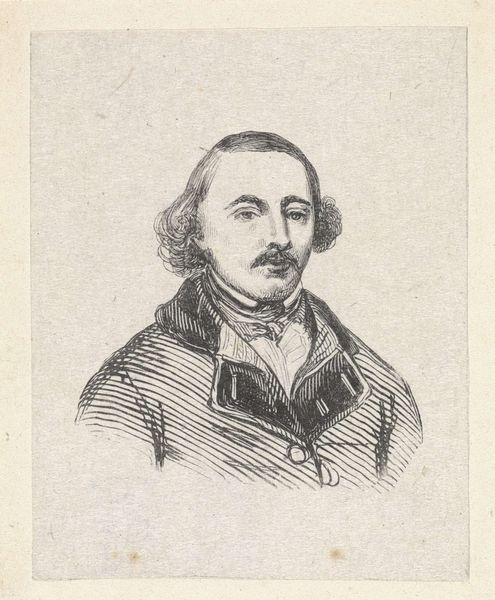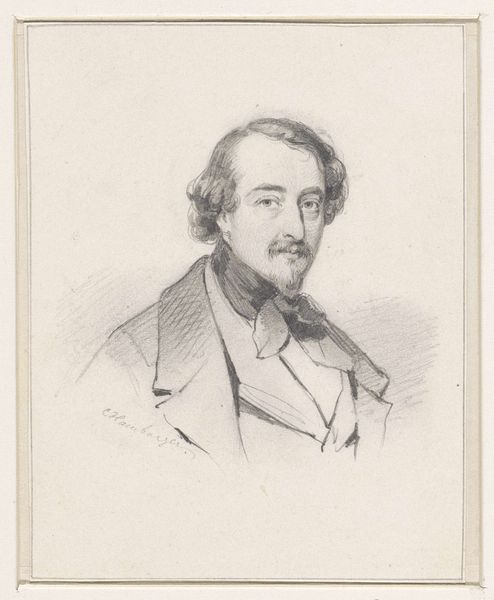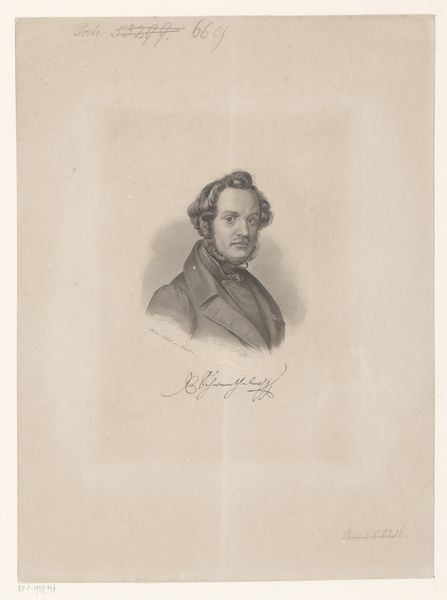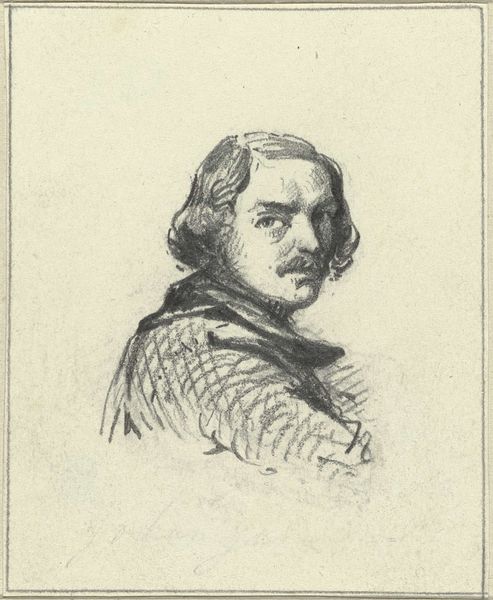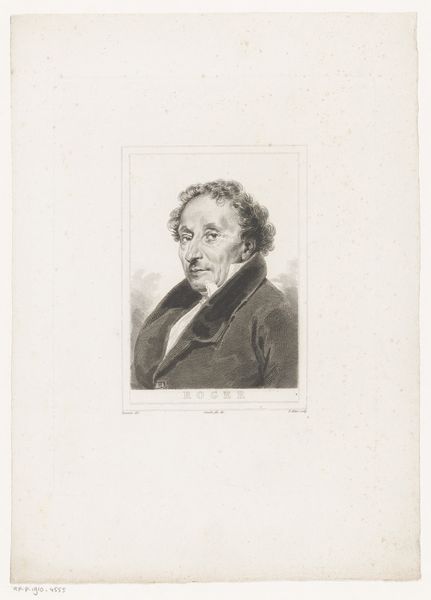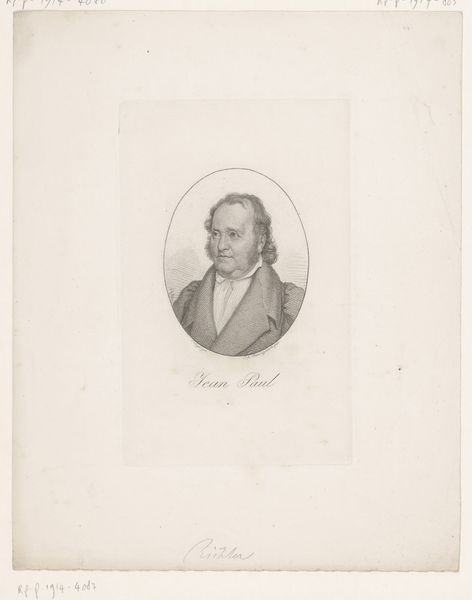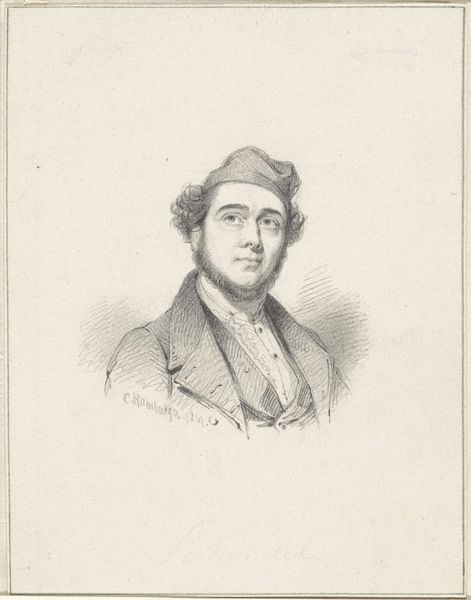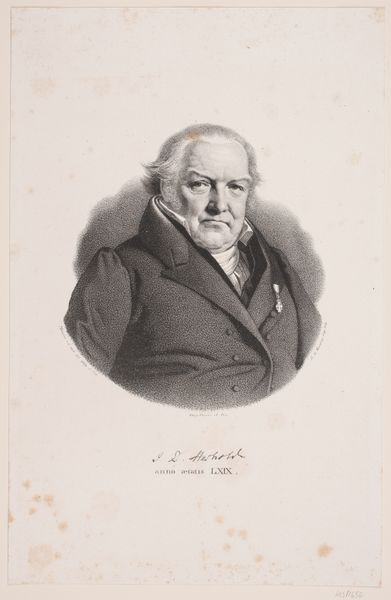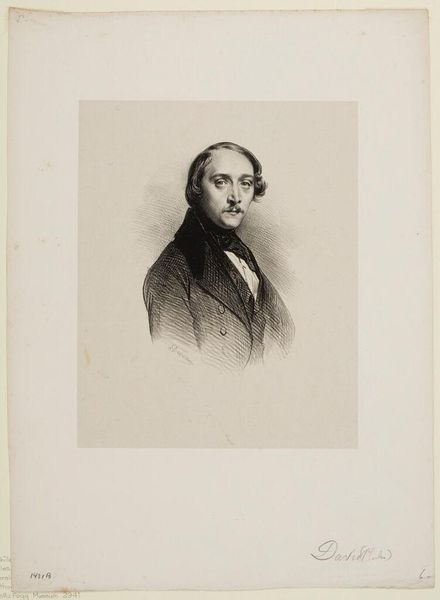
drawing
#
portrait
#
drawing
#
pencil drawing
#
romanticism
#
realism
Dimensions: height 47 mm, width 40 mm
Copyright: Rijks Museum: Open Domain
Curator: It’s rather subdued, isn’t it? All those pale greys and thin lines… almost like a whisper of a person. Editor: Indeed. What we see here is “Portrait of Josephus Laurentius Dijckmans,” a pencil drawing by Henri Van der Haert dating back to 1841-1842, currently housed in the Rijksmuseum. It's a striking example of 19th-century portraiture. Curator: Pencil. Makes you consider the accessibility of portraiture at that time. Oil paint was for the elite, but this drawing? More individuals would have access to this means of production. Editor: Precisely. This artwork offers a peek into the rise of the middle class and their aspirations to participate in cultural representation, although its current home in the Rijksmuseum suggests its eventual acceptance into the higher echelons of cultural artifacts. The romantic sensibility evident, also mirrors the social climate where individual identity started becoming the subject of intense interest and admiration. Curator: The very careful, almost painstaking way the lines build up form... the controlled shading... there’s such craft here. It challenges that high/low art divide. Was this sort of drawing regarded as simply preparatory work, or an artwork in its own right? Who was the laboring force who rendered similar, and probably many more now lost, artworks? Editor: Those are exactly the kinds of questions art historians are still trying to address today! The market and its value systems shape our understanding of an artist’s production, so we should be always cognizant of those aspects. This portrait could've been commissioned by Dijckmans himself, a public figure eager to cultivate a certain image through artistic means, for example. Curator: So it's not simply about individual talent but a confluence of economic forces and cultural expectations. Looking closely at this particular drawing...it makes me think of that intricate labour involved in artistic creation during this era, what an intriguing subject of investigation! Editor: Absolutely. And considering the museum space that this artwork inhabits, we also must consider how its meaning continues to shift and accumulate, speaking volumes about societal and artistic tastes and changes throughout history. Curator: It does indeed seem the drawing offers insights that can be translated into different historical, social and material frameworks. Editor: Ultimately, this image provides a remarkable space to reflect on the complexities of artistic expression within the grand historical tableau.
Comments
No comments
Be the first to comment and join the conversation on the ultimate creative platform.

